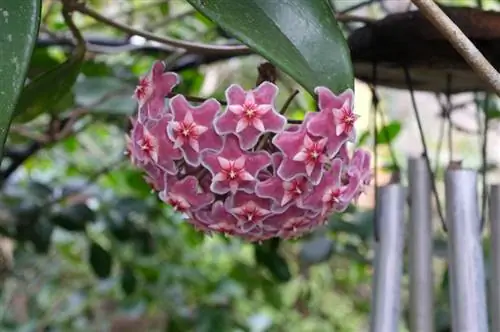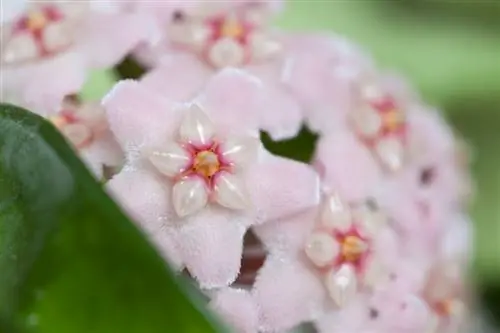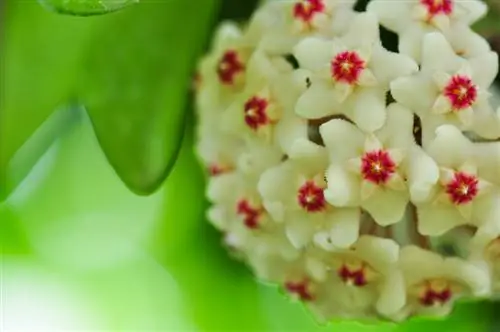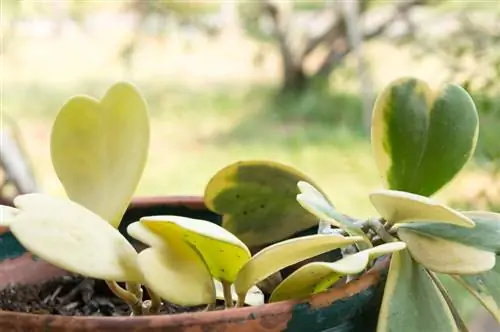- Author admin [email protected].
- Public 2023-12-16 16:46.
- Last modified 2025-01-23 11:20.
The so-called porcelain flower (Latin: Hoya) is often referred to as a wax flower, which alludes to the delicate flowers. In this country, the plant genus, which comes from the tropical rainforests of Asia and Australia, is primarily cultivated as a houseplant on the windowsill.

Where should a porcelain flower be placed?
The ideal location for a porcelain flower (Hoya) is bright, but without direct sunlight, with a well-drained substrate to avoid waterlogging. In winter the temperature should be around 15 degrees Celsius. The plant should not be turned after it has settled in.
The porcelain flower in the garden
The porcelain flower or wax flower often grows in nature as an epiphyte on the branches of trees. There the plant receives no direct sunlight and only receives limited amounts of moisture. If the porcelain flower is to thrive as a potted plant on a terrace, it should under no circumstances have to struggle with waterlogging or direct sunlight. Overwintering the plant can sometimes cause problems, as the porcelain flower tolerates any change of location very poorly.
The porcelain flower in the house
When cultivating the extremely attractive blooming wax flower indoors, the following parameters must be tailored precisely to the needs of the plant:
- Moisture of the substrate
- Sunlight (preferably not directly in the sun)
- Temperature (in winter around 15 degrees Celsius if possible)
- Nutrient intake
When caring for the porcelain flower, care should be taken not to rotate the plants after they have settled into one location. Otherwise leaves and buds may fall off. Fertilizing too frequently with nitrogen-containing fertilizer can also cause the Hoya plants to stop blooming.
Tip
Since the porcelain flower is not completely non-toxic, the plant should be placed as far as possible out of the reach of pets and small children.






